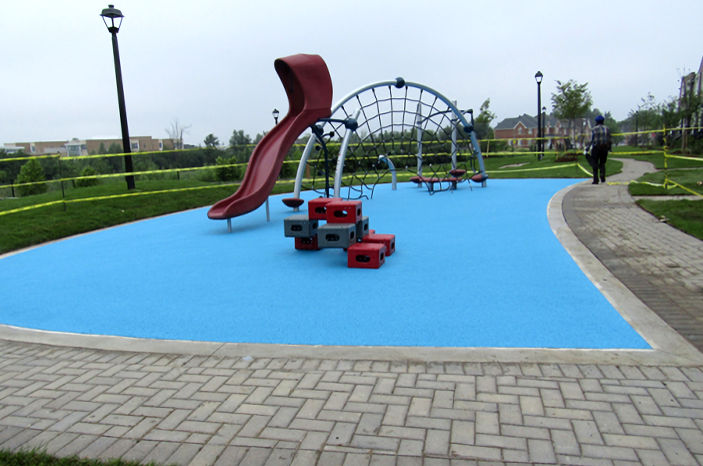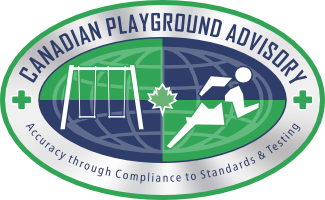EVERPLAY News Will You Pay Twice?
Volume: 16 Issue: 1 February 2009
Standards and legal requirements such as the ADA require specific performance for playground surfaces. As a result of an attempt to reduce cost and make a specification generic, you may have to purchase your 'protective surface' twice or upgrade it within a few years of the initial installation. You may have to budget for a retrofit or eplacement rather than expanding to new projects. If a synthetic surface fails to meet standards over time, you could well be paying twice the initial cost or more depending upon the failure of the existing surface.
According to the various standards for playground surfacing, you will install a 'protective playground surface' generally 6' from the perimeter of a play structure to absorb the impact from a fall. The degree of the impact absorbed is outlined in the ASTM Fl 292 standard for playground.urfacing. The surface may also have to be firm, stable and slip resistant to provide agcgssjbjlj!y. That surface can consist of a number of materials such as sand, metering stone, woodchips or a synthetic. The type of surface will
depend upon your needs and the intensity of use of the play area. Where there is very little activity and a maintenance budget to keep loose materials clean and loose, you would potentially select the sand or metering stone. The woodchips would carry a higher cost to the loose surface, however depending upon the type of woodchip selected; the need for maintenance could be reduced. In any event all of the loose materials will have to be topped up annually and replaced from time to time. All of these activities cost money and the budget commitment must be made at the time of initial installation. A synthetic surface will provide for cleanliness, low however this could well be at higher capital cost with the savings being in the future.
According to the various standards for playground surfacing, you will install a 'protective playground surface' generally 6' from the perimeter of a play structure to absorb the impact from a fall. The degree of the impact absorbed is outlined in the ASTM Fl 292 standard for playground.urfacing. The surface may also have to be firm, stable and slip resistant to provide agcgssjbjlj!y. That surface can consist of a number of materials such as sand, metering stone, woodchips or a synthetic. The type of surface will
depend upon your needs and the intensity of use of the play area. Where there is very little activity and a maintenance budget to keep loose materials clean and loose, you would potentially select the sand or metering stone. The woodchips would carry a higher cost to the loose surface, however depending upon the type of woodchip selected; the need for maintenance could be reduced. In any event all of the loose materials will have to be topped up annually and replaced from time to time. All of these activities cost money and the budget commitment must be made at the time of initial installation. A synthetic surface will provide for cleanliness, low however this could well be at higher capital cost with the savings being in the future.




